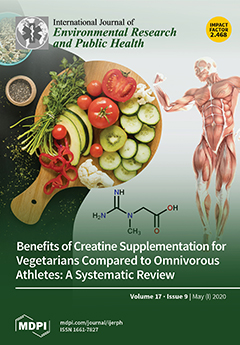This study employed the International Osteoporosis Foundation’s One-Minute Osteoporosis Risk Test to examine factors related to the osteoporosis risk of institutional caregivers. In this cross-sectional study, a self-developed structured questionnaire comprising the One-Minute Osteoporosis Risk Test was used to obtain data on the caregivers’ demographic data, health habits, working style, and osteoporosis risk. Seven disability welfare institutions were selected as research sites, and 465 copies of questionnaires were distributed to the institutions’ employees, with 455 valid responses collected for a valid return rate of 98%. SPSS for Windows (Version 20.0) was used to analyze questionnaire data; descriptive-statistical frequency, a χ
2 test, and logistic regression were used to determine the correlation between demographic data, health habits, working style, and osteoporosis risk. The results revealed that primary risk factors include <30 min of daily exercise (38%), lack of dairy product or calcium tablet intake (28%), and <10 min of daily outdoor activity or not taking vitamin D supplements (29.9%). In total, 395 (86.8%) of the respondents scored less than 5 in the osteoporosis risk test; the remaining 60 (13.2%) scored 5 or higher, revealing a high risk of early osteoporosis. An independent variable analysis revealed that the risk factors of early osteoporosis include age, education level, having undergone bone density tests, prior disease diagnosis, long-term medication use, physical fitness, dietary habits, and average time of exposure to sunlight. In the multivariate analysis, poor physical fitness (odds ratio [OR] = 2.18, 95% confidence interval [CI]: 1.12–4.27,
p = 0.023) and average daily time of exposure to sunlight (OR = 0.24, 95% CI: 0.59–2.59,
p < 0.001) were significantly correlated with osteoporosis risk. In other words, respondents with poor physical fitness were 2.18 times as likely to have osteoporosis as those with good physical fitness, and those exposed to sunlight for 30 min or longer every day were 0.24 times as likely to have osteoporosis as those exposed to sunlight for less than 30 min every day. Accordingly, institutions must encourage employees to spend more time in the sun every day and improve their physical fitness through exercise.
Full article





